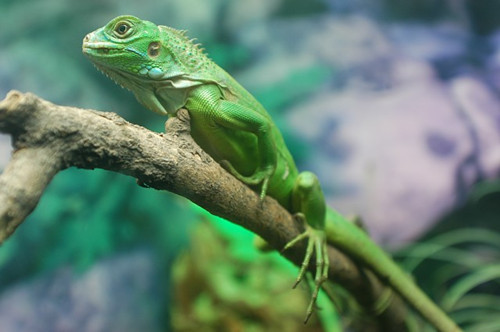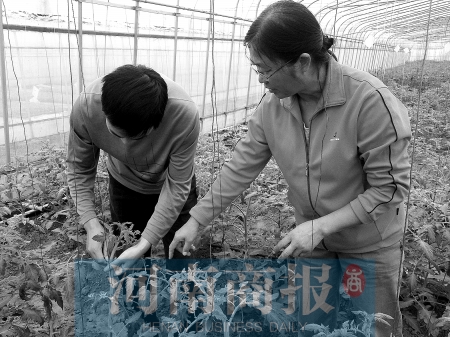Technical Strategy and Economic value of recommending raising Rabbits
I. the economic value of recommending raising rabbits
1. The effect of increasing income is significant. Planting winter rye in winter fallow fields, the whole growing period is 5-6 months, harvesting 3-4 times, and the yield of fresh grass is 3-5 tons per mu, equivalent to 600-800 kg of hay. Two hundred rabbits can be raised per mu. According to the market price, except for the production costs of grass, rabbit and fertilizer, the profit of each rabbit is more than 10 yuan, and the net income per mu can be increased by more than 1500 yuan.
two。 The cost-saving and synergistic effect is outstanding. Forage can promote the growth and development of rabbits, increase the reproduction rate of rabbits and improve the quality of fur. Planting forage can be green to feed rabbits, can also be processed into grass powder mixture feed, grass powder can account for 20% of the mixture, greatly reducing the feed cost.
II. Selection of forage varieties recommended for raising rabbits
It should have three conditions: it should be a forage variety that rabbits like to eat, adapt to local natural conditions and suitable for local production and planting conditions, and have high yield and excellent quality.
Among the high quality forage grasses suitable for planting in our province, the main ones that rabbits like to eat are Mexican corn, Gaodan grass, winter rye 70, annual ryegrass, bitter cabbage, chicory and alfalfa. These grasses have the following advantages: high nutritional value of ①. ② can be used for a long time. Annual forage can be cut many times, and perennial forage can be used continuously for many years. ③ fresh grass has good palatability. ④ has strong resistance to diseases and insect pests. These grasses generally do not have serious diseases and insect pests, which can reduce production costs and pesticide residues.
Third, the recommended rabbit production model which is worth popularizing
1. The production mode of raising rabbits with single forage grass: generally, the forage varieties with large proportion of leaves, high quality and high yield should be selected to raise rabbits. The main production modes are as follows:
The model of growing grasses and raising rabbits in ①. The main choice is to grow high-stalk grasses such as Mexican corn, Gaodan grass, Sudan grass and sweet sorghum, which are directly fed to rabbits as green fodder. the cutting height of grass can reach 120-150 cm. It takes 18 kg of Gramineae forage (dry matter) to raise one rabbit and 2 mu of Mexican corn, or 2 mu of Gaodan grass, or 3 mu of sweet sorghum and Sudan grass to raise 100 rabbits.
② planting leguminous forage to raise rabbits. The main choice is to plant legume forage such as alfalfa and red bean grass, cut fresh grass and feed it at the budding stage, or to harvest hay from early flowering stage to full flowering stage and feed rabbits, each rabbit needs 20 kilograms of leguminous forage (dry matter). Hay can also be processed into hay powder, which can be added to the formula feed, and the appropriate proportion of general grass meal added to the diet is 30% 50%. To raise 100 rabbits, it is necessary to plant 45.5 mu of alfalfa or red bean grass.
The model of growing leafy vegetable forage and raising rabbits in ③. The main forage grasses to be planted are chicory, pine vanilla, sowthistle and grain amaranth, which should be used as green fodder. The daily feeding amount can reach 50%-60% of the ration, and each rabbit needs 30 kg of leafy herbage (dry matter). 1-1.5 mu of leafy vegetable forage is needed to raise 100 rabbits.
④ mixed planting of leguminous forage and gramineous forage to raise rabbits. This model can improve the forage utilization rate of rabbits; the general forage varieties of leguminous forage include alfalfa, white clover, red clover and red bean grass, and grasses are mainly perennial ryegrass, fescue and chicken foot grass, and the proportion of mixed cultivation of legume forage and gramineous forage is 1 / 2 / 2 / 3. The forage grass harvested during the hybrid can account for 70% or 80% of the diet. Raising 100 rabbits requires a mixed planting area of 60.8 mu of leguminous and gramineous forages.
The rabbit raising model of mixed planting of ⑤ leafy herbage and tall grass. Among the forage varieties planted in this model, leafy herbage includes chicory, leafy pine vanilla, bitter thistle and grain amaranth, while Gramineae forages include Mexican corn, Gaodan grass, Sudan grass and sweet sorghum. These two kinds of forages can be intercropped on the same plot, or they can be planted separately and mixed to raise rabbits after harvest. The proportion of leafy vegetables and Gramineae forage is 2:3, and the proportion of this mixed forage in rabbit diet can reach 70% to 75%. The area of intercropping with leafy vegetable forage and tall grass forage is 23.3 mu, or 1 mu of leafy vegetable forage and 1.5 mu of tall grass forage.
two。 The mode of producing forage and raising rabbits by compound planting of forage and food crops:
① wheat-forage rotation. The main forage grasses cultivated are Mexican corn, grain amaranth and Sudan grass. After wheat harvest, these grasses were sown in the wheat field to raise rabbits. From late September to early October, all the grasses were cut, and wheat was sown to complete a rotation cycle.
② wheat reserved row interplanting forage grass. Generally in the middle and late May, forage grass is planted in the reserved row of wheat field, and the cultivated forage grass is mainly Mexican corn, Gaodan grass and Sudan grass, which can be directly cut and used after wheat harvest. These grasses are usually sown on demand.
Related
- A course of planting techniques and methods on how to grow carrots
- How to plant the latest tulips?
- Is it better to pick tea in the morning or in the afternoon? When is the best time for tea to be picked? what is the third or fifth tea?
- Launch Yuanxiao Happy combination Haocha + Tea Yuan healthy Taste
- Penghu Tourism "Fireworks 20 Parade with You"
- 2022 West Lake Happiness holds "Digital Revitalization Voucher" and draws iphone13 and laptop.
- Banqiao Fuzhou social houses are designed to change start-up combined with police elimination to create a safe and livable environment
- The convenient measure of "mechanical weeding" in Xinbei has been abused and the Agriculture Bureau has imposed heavy penalties on the illegal land consolidation.
- Changgeng University Joins Hands with Four Memory Factories to Rescue Memory Talent Shortage
- The list of Taiwan's top 100 MVP managers is listed by the Director-General of the Farmers' Association of Sanxia District.



